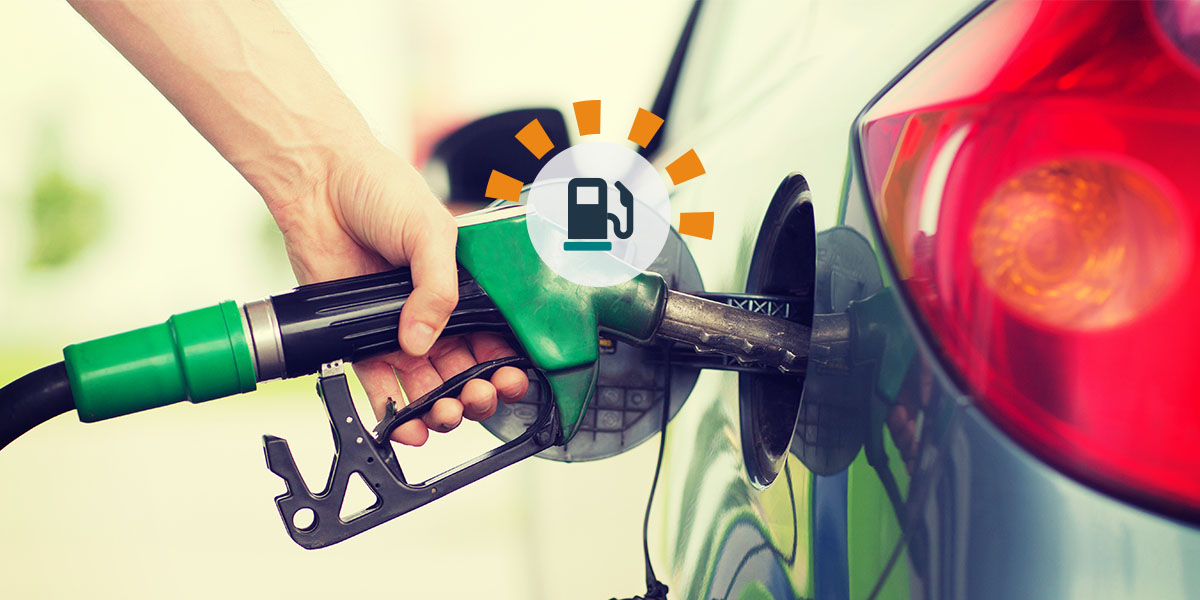3 Renewable Fuels That Just Might Replace Gasoline
We all know the problems with fossil fuels. Will one of these three alternative energy sources one day replace gasoline in our vehicles?
Make cleanup a breeze with a roll off dumpster:

Alternative Fuels: A Solution to U.S. Fossil Fuel Use?
In the U.S., 391.40 million gallons of gas are burned per day which equals about 143.85 billion gallons per year. Burning gasoline for transportation is responsible for 30 percent of our greenhouse gas emissions. How can we lower that impact when we still need a way to get around? Find realistic alternatives to fossil fuels.
Some are more widely used than others, but each option on our list of alternative fuels is a promising energy source for cars—and anything else that currently runs on dinosaur bones.
Let’s see what they’re all about.
What Is an Alternative Fuel?
Alternative fuels are materials other than fossil fuels that can be used to power vehicles and other machinery. They include gasses like hydrogen; alcohols like ethanol; biologically-derived materials like biodiesel; as well as other sources. People also call these substances “non-conventional fuels,” “advanced fuels” and “renewable energy.” Many of the advantages of alternative fuels are rooted in the fact that, unlike gasoline, they aren’t petroleum-based.
What Are the Advantages of Alternative Fuels?
- Often cheaper to produce than gasoline because they don’t need to be refined.
- They usually come from renewable sources.
- Most are produced in the U.S., reducing our need to import fuel.
- They cause less air pollution and greenhouse gas emissions.
- Some can create new revenue sources for farmers or manufacturers.
While researchers are investigating many gasoline substitutes, a few have emerged as front-runners. These are the renewable fuels most likely to power your commute—and more—in the near future.
Today’s 3 Most Promising Gasoline Alternatives

Item #1: Biodiesel
What Is Biodiesel?
Biodiesel is a type of alternative fuel that can power the same compression-ignition engines as regular petroleum-based diesel. Vegetable oils, animal fats and even restaurant grease can be used to produce biodiesel. And since it’s made from organic matter, it’s biodegradable and renewable. Biodiesel has been produced on a commercial scale for over a decade and is now one of the most widely used renewable fuels, either on its own or blended with conventional diesel.
Biodiesel is used for powering a huge range of vehicles, from freight trucks and construction equipment to trains and buses. But its uses go far beyond transportation.
Biodiesel Can Be Used to:
- Heat homes.
- Generate electricity.
- Help clean up oil spills.
- Degrease tools and engine parts.
- Produce hydrogen for use in hydrogen fuel cells.

“From a performance point of view, biodiesel has fewer particulates and other emissions and burns cleaner. In other parts of the world, using agricultural residues that otherwise are burned in the fields not only provides cleaner-burning fuel but prevents that harmful black carbon (soot) from getting into the atmosphere.”
How Does Biodiesel Compare to Fossil Fuels?
Pros | Cons |
|---|---|
Works in existing engines. Even when modifications are needed, they're minor. | May briefly plug fuel filters since it loosens engine residue. |
Produces 74% less net carbon dioxide emissions than conventional diesel. | Performance can decrease in cold weather. Many switch to lower-percentage blends. |
Provides an additional revenue source for restaurants, farmers and others. | Not currently carried at many filling stations outside the Midwest. |
Here are a few things you can do according to Ivancic, Executive Director of Advanced Biofuels USA:
- Always purchase fuel that includes some renewables—whatever is appropriate for your diesel vehicle (B2-B100). Look on the driver’s side door or in your owner’s manual to find out what blends you can use.
- If you run a business that uses cooking oil, recycle it for use as biodiesel and/or animal feed.
- Make sure your local schools, universities, churches and restaurants know about opportunities to recycle used cooking oil. Offer to help them implement a recycling program.
- Check on the availability of biodiesel blends of heating oil, and biobased plastics and other products for your routine use.
- Ask your local political candidates what they are doing to promote the understanding, development and use of biofuels. What effort do they make to use biofuels?

Item #2: Hydrogen Fuel Cells
What Is a Hydrogen Fuel Cell?
A hydrogen fuel cell combines hydrogen and oxygen to create a chemical reaction that produces electricity. While it isn’t always produced sustainably, there are many renewable sources we could use to get the hydrogen used in fuel cells. These include electrolysis, fermentation and even biodiesel. As an alternative energy for cars, their biggest benefit is that they emit nothing but water vapor.
They’ve only been on the American market since 2015, but Hyundai, Honda and Toyota all offer fuel cell vehicles, and many other brands are working on their own models. And according to Jennifer Gangi of the Fuel Cell and Hydrogen Energy Association (FCHEA), fuel cells are gaining traction in forklifts and other equipment in warehouses and distribution centers across the country. “Customers are finding value in improved operational efficiency and cost savings using fuel cells in vehicles over battery units.”
Hydrogen Fuel Cells Can Be Used for:
- Powering any devices that use batteries.
- Producing clean energy for cities and buildings.
- Fueling booster rockets for space shuttles.
- Providing reliable backup power for hospitals and other essential services.

“There are now more than 5,800 fuel cell vehicles on the road in California. FCVs are the only zero-emissions vehicle capable of replicating today’s driving experience of a 300 – 400 miles range and a refueling time of just three to five minutes.”
How Do Hydrogen Fuel Cells Compare to Gasoline?
Pros | Cons |
|---|---|
Produce 90% less emissions when using hydrogen from renewable sources. | Most hydrogen sources are non-renewable but create 34%-50% fewer emissions. |
Give twice as many miles per gallon as a tank of gasoline. | Fueling stations are currently only found on the coasts. |
Need less maintenance needed, since fuel cell engines have no moving parts. | Much more expensive to buy than conventional vehicles. |

“A good place to start is reading up on the latest advancements in the industry. The FCHEA has a free monthly newsletter to keep tabs on industry news. Then you can help make a difference by letting your locally elected representative know you support hydrogen.”

Item #3: Ethanol
What Is Ethanol?
Ethanol is an alcohol that can be substituted for gasoline. Most often made from the starch and sugars found in grains like corn, barley and sugar cane, it’s the oldest renewable energy for vehicles: Henry Ford’s Model T ran on a mix of grain alcohol and gas. However, Joanne Ivancic of Advanced Biofuels USA points out that advanced ethanol—and other biofuels—can also be made from municipal solid waste (MSW), manure, waste carbon dioxide, and agricultural and forest waste. “Waste materials of many kinds can be converted. For example, waste from an almond and walnut orchard in California will be converted to ethanol via a gasification and gas fermentation process.”
Today, most U.S. fuel contains a small percentage of ethanol, but flex-fuel vehicles can use a blend of up to 85 percent alcohol known as E85. Researchers are also investigating ways to produce ethanol from grasses and algae. Since these need fewer resources than grain to grow, they’d produce an even more sustainable fuel source.
Ethanol Can Be Used For:
- Killing bacteria as an ingredient in hand sanitizers.
- Dissolving paints, lacquers and varnishes.
- Preserving cleaning and beauty products.
- Enhancing the flavor of food extracts like vanilla.

“The high octane of ethanol enables us to use fewer carcinogenic chemicals in gasoline and avoids the use of harmful aromatics such as benzene.”
How Does Ethanol Compare to Gasoline?
Pros | Cons |
|---|---|
E85 produces 34% less net greenhouse gas emissions than gasoline. | Long-term ethanol use may damage engines in cars made before the 2000s. |
Fueling stations that carry E85 are available across the country. | E85 gives fewer miles per gallon than gasoline. |
Grains leftover from ethanol production can be sold as livestock feed for added revenue. | Transportation and energy costs often limit sales to within a 100-mile radius of the plant. |
According to Joanne Ivancic, you can do these things today to help us get off our addiction to oil:
- Learn about the fossil-fuel divestment movement. Divest as an individual and advocate for your colleges/universities, religious organizations, communities and businesses to divest their fossil fuel interests (and invest in renewable alternatives).
- Look for fuel stations with ‘blender pumps’ in your neighborhood that give customers a chethanol-blended blended fuels. Praise them online, to your local media, and let the managers know you appreciate their efforts.
- If you can’t tell if there is ethanol or biodiesel in the fuel, let the fuel station manager know that you want to buy renewable fuel.
- Find a biofuels-related advocacy organization in your community and participate. If there isn’t one, consider starting one. Advanced Biofuels USA can help.
- Donate to Advanced Biofuels USA, a 501(c)3 nonprofit dedicated to promoting the understanding, development and use of advanced biofuels as an energy security, economic development, military flexibility, climate change mitigation and pollution control solution."
Excited About Alternative Energy for Vehicles?
You’re in good company. From family farmers trying to get more out of their land to consumers looking for a greener way to travel, we have a lot to gain from these gasoline replacements becoming mainstream. Biodiesel, hydrogen fuel cells and ethanol are just a few examples of alternative fuels that could change how we power our commutes and our businesses. Which will emerge as the most likely contender? It won’t be long before we find out.
Expert Contributors

Joanne Ivancic
Executive Director of Advanced Biofuels USA, Joanne has lived in the Washington area for over 30 years. She has worked for Senator Charles Grassley and has served as a lobbyist for Atlantic Biomass Conversions, Inc. She has also worked with executive agencies to promote advanced biofuels research and production on Capitol Hill. Joanne is also licensed to practice law in the Washington, DC, Virginia and Utah areas.

Jennifer Gangi
Jennifer Gangi has more than twenty years of experience in the fuel cell and hydrogen industry. Her work at FCHEA, a company local to the Washington D.C. area includes membership, media, end-user and public outreach, writing articles, editing and writing industry materials, case studies, newsletters and other marketing materials. She works to closely track the fuel cell industry and works with potential stakeholders to find areas of opportunity for collaboration and industry advancement.
Other Sources
The Hidden Costs of Fossil Fuels. (2016, August 30). Retrieved from Union of Concerned Scientists
Fossil, Department of Energy. Retrieved from Energy.gov
How Much Gasoline Does the United States Consume?. (2021) Retrieved from EIA.gov
What Do You Think?
Interested in alternative fueling options? Let us know. Head over to Twitter or Facebook,
and use #dumpstersblog to join the conversation.






